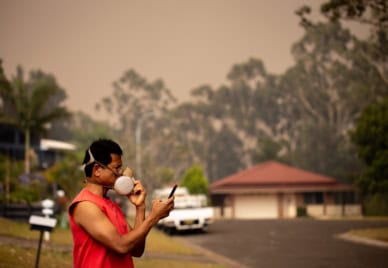
Aggregating and Integrating Data on Health Outcomes Associated with Bushfires at a National Scale
Exploreabout Aggregating and Integrating Data on Health Outcomes Associated with Bushfires at a National Scale
Outbreaks of exotic animal diseases such as Lumpy Skin Disease can pose a significant risk to animal populations. Lumpy Skin Disease has spread in parts of Southeast Asia, and has a range of transmission pathways, including wind dispersal via pathogen-carrying insects from overseas. An outbreak in Australia would impact Australia’s beef and dairy industries, lead to negative animal health and welfare, and affect food security. It would also cause Australia to lose key export markets.
Epidemiological models can support evidence-based decision-making in animal disease outbreak response. This project will support the real-time integration of models to emergency response decision-making processes in the agriculture sector.
This project aims to improve Australia’s biosecurity response to rapidly emerging threats by creating a framework to test, evaluate and improve epidemiological modelling to support decision-making.
We will develop rapid modelling tools to minimise the negative impacts and prepare and empower decision makers to use these tools in a biosecurity emergency outbreak, starting with Lumpy Skin Disease.
The focal disease for this project is Lumpy Skin Disease, but the animal industry faces a range of potential disease threats, which may be accommodated in the project. Other notable examples include foot and mouth disease, African swine fever, highly pathogenic avian influenza and bluetongue.
The project is also working with Biosecurity Commons, an ARDC-supported project.
This project will:
As part of the collaboration in this project, the project intends to form a consortium to exist beyond the lifetime of the proposed project, which will continue to collaborate and work on related projects to support rapid response biosecurity modelling.